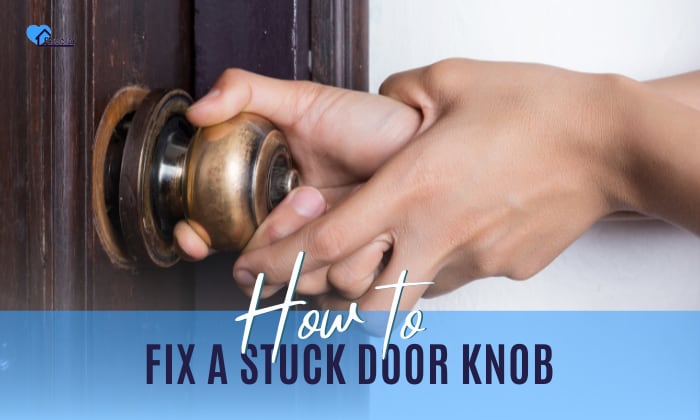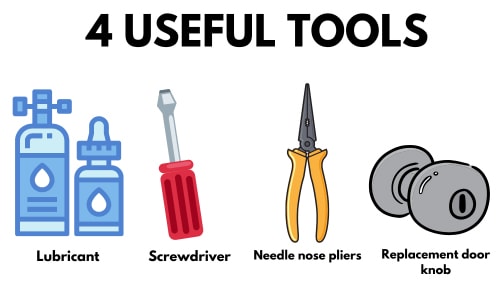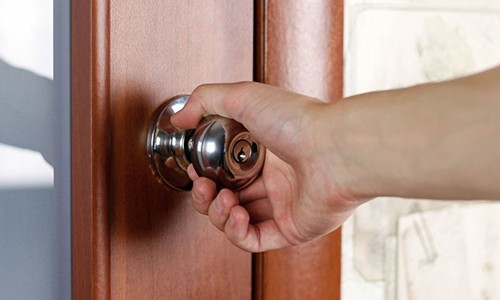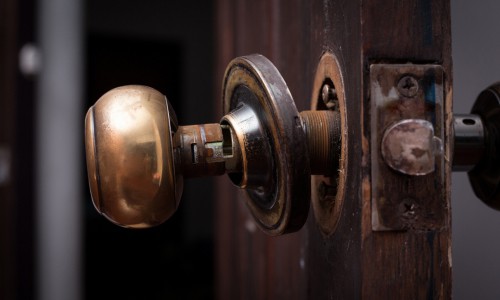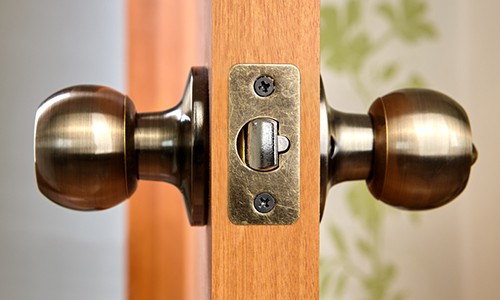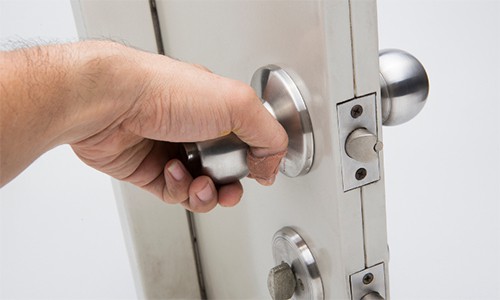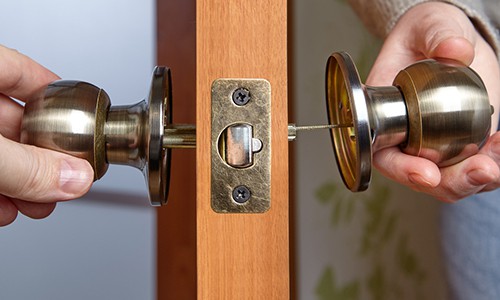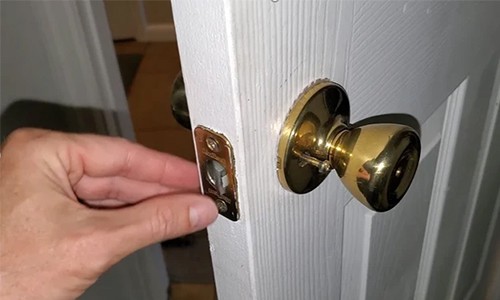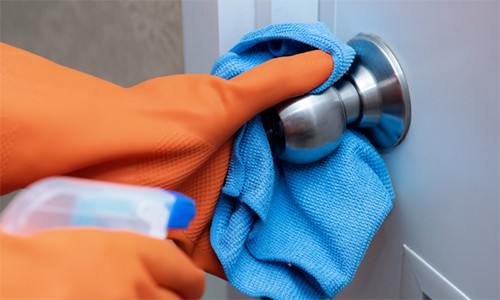We use our doors every day, so it’s really disheartening if our door knobs break or become stuck. Imagine coming home from work, you’re ready to relax, and just as you’re about to enter your front door, it won’t even budge. That problem can add to your stress.
If you find yourself in a situation where you have a stuck door latch, you might be wondering how to fix a stuck door knob. For that, we invite you to read this article and find out effective solutions as well as troubleshooting methods.
Table of Contents
Step-by-step to Fix a Stuck Door Knob
If your door knobs or handles are hard to turn, that might be a telltale sign that they need a repair. Door knobs suffer wear and tear, so this isn’t unexpected. Sometimes, even knobs on brand-new doors can suffer from the same problems. Whichever the case, our guide below will instruct you on ways to make the knobs turn smoothly again.
Below are the steps for fixing a stuck door knob.
What to Prepare
Before diving into the fixing, here are things you need to prepare:
- Lubricant
- Screwdriver
- Needle nose pliers
- Replacement door knob
Step 1: Move the Door Knob a Bit
Prevention is better than cure. To determine whether your door knob requires major repair, give it a jiggle. Sometimes, moving your door knob like this will be enough to unjam a lock, saving you the trouble of fixing it.
If your door knob is sticking and you find that there’s no way to nudge it, then it’s time to bring out the tools.
Step 2: Check for Rust
Door knobs can rust over time, especially when you’re living in areas with high humidity. Accumulated rust can prevent components from working properly, causing sticky door knobs.
To thoroughly inspect for rust, remove your knobs from the door. If it won’t come off, apply a lubricant before prying them off. Look for any reddish-brown discoloration or spots on the surface of the door knob. If you notice any of these signs, it could indicate the presence of rust.
In cases where the rust hasn’t eroded much of the metal, the knob should operate smoothly again once you scrub the affected parts.
Step 3: See if the Latch Has Problems
Door knobs have different components that require proper care. One of the most crucial components of our door knob is the latch. If the mechanism is not latching, you need to follow these steps:
- Turn the door knob so the latch will retract
- Slowly turn the knob
- Use your fingers to prevent the latch from fully extending
- Tug on the latch bolt tongue
At this point, you need to determine whether the latch bolt is moving or not. If it is moving, then the door lock is jammed from the inside. If the latch is not moving, then the strike plate might be the one preventing it.
Step 4: Check the Locking Mechanism
Some door knobs have locks and some don’t. If your door lock mechanism is stuck, then it’s time to check its inner workings.
Here are some of the things you can do to fix a door knob with a lock:
- See if your key is broken – Sometimes, the problem lies with what you use to access the mechanism and not the mechanism itself. Try checking your keys for cracks or other damage before considering replacing your door knob.
- Use a lubricant – Different components get rusty over time. Using a lubricant will make the operation of your door knobs easier. Lubricants can also sometimes solve your problems with your door knobs.
- See if everything is lined up – Door knobs rely on everything being perfectly aligned. If your door knob isn’t aligned with your strike plate, it’s time to reposition your strike plate to accommodate the latch.
- Replace the locking mechanism – If you’ve tried every precautionary method listed above and your door knob still keeps getting stuck, then a replacement is in order.
Step 5: Replace Your Door Knob
Replacing your door knob should serve as your last-ditch effort if you can’t locate the problem or the damage is too severe to be fixed. If your door knob stays in a locked position or after pushing the button, the doorknob is stuck, it’s time to disassemble the mechanism and replace it with a new one.
Here are the steps to disassemble and replace your door knob:
- Remove the screws holding the mechanism together
- Pull the door knob from its spindle
- Examine the mechanism and check if there’s anything you can do to fix the damage
- Use your needle-nose pliers to clear the debris, if they’re present
- Check if the springs are working
- Once you’ve cleared any obstructions and tightened up the springs, screw the mechanism once again. Make sure that there are no screws left unturned.
- Check if the door knob is already working
- If it’s not working, disassemble it once again and replace it with a new mechanism
- Once you have a replacement, just screw the mechanism onto the door and you have a working door knob
Signs of a Jammed Doorknob and Tips to Prevent It From Happening
Knowing the signs early on will help you determine what to do next. If you suspect that your door knob is close to breaking or jamming, you can check for signs that might support this suspicion.
Here are different indicators of a jammed door knob:
- Your Doorknob Feels Unusual
Since you use your doorknob every day, there are certain things that will tell you it’s not functioning properly. Signs like your deadbolt or lock not fitting in like it used to.
There are also instances of door knobs that turn but don’t open from the outside or door lock thumb turn sticking. If you experience these things, then there might already be a problem with your mechanism.
- Different Components are Broken or Missing
Wear and tear is pretty common with door knobs. Sometimes through constant use, different components get lost or outright broken. If, for some reason, you can’t unstick a door knob, it sticks out too far, or it’s making a clanking noise whenever you use it, then it’s time to consider repairing or replacing it.
- Check the Door Knob Grade
Door knobs are categorized into grades. These grades tell you about their quality and how long it takes for them to break. If your door knob is categorized as a grade 3 door knob and you’ve had it for a while, it’s time to replace that mechanism.
Ideally, the best grade to get is 1, so the next time you go to your hardware store, look for door knobs with that grade. If your new door knob sticks, then it might require another replacement.
- Door Knobs Haven’t Been Lubricated Enough
Like any other mechanisms that we have, door knobs also require lubrication. Sometimes, the reason why we can’t open a stuck door knob from the outside is that we haven’t given it the means to work properly.
We have to remember that without lubrication, it’s just metal on metal. When components rub up against one another regularly, it causes irreparable damage down the line.
Helpful Tips to Keep Door Knobs Functioning Properly
The best tip to keep your door knobs functioning at maximum efficiency is to regularly lubricate them. Lubricants help make the process of these internal components smoother and prevent them from grinding against each other.
There are several types of lubricants that you can try. Products such as WD-40, Graphite powder, Silicone spray, and White lithium grease are all great options. However, only apply a certain amount as the instruction suggests. You don’t want lubricants dripping off your doors.
Another tip is to always turn the knobs when you’re entering a room. Some people just slam the door and wait for the knobs to turn by themselves through pressure, and that is highly damaging to the knobs.
FAQs
How can I tell if my doorknob needs to be replaced?
As discussed earlier, if your doorknob feels unusual, if there are clanking noises, and if you haven’t provided ample lubrication to them, those are telltale signs that they need to be replaced.
If you find yourself in this situation, you shouldn’t try to open a door knob that won’t turn. Instead, ask a professional (a handyman or a locksmith) to give their opinions. If the knobs are beyond repair, it’s time to get new ones.
How often should I lubricate my door knob?
Lubricating your door knob is part of making sure that it will function with maximum efficiency. The ideal time in lubricating your door knobs is about 6 months after your last one. This duration guarantees that your door knob’s components will not get brittle after a while.
Conclusion
Door knobs are often unappreciated, but you can certainly feel their absence if they are broken. Following the steps and tips listed above will help you prevent this from happening or repair your door knobs if they get broken.
Issues like your doors being too thin for knobs can easily be fixed, but damage to these knobs isn’t. However, now that you know how to fix a stuck door knob, you won’t have to worry when this thing happens again.
Read next:

I am the last member to join Revolar and might be just the luckiest to work with dedicated people like Teddy and John. Our team has established a process where my only job is writing the best content to deliver incredible ideas and guides.


